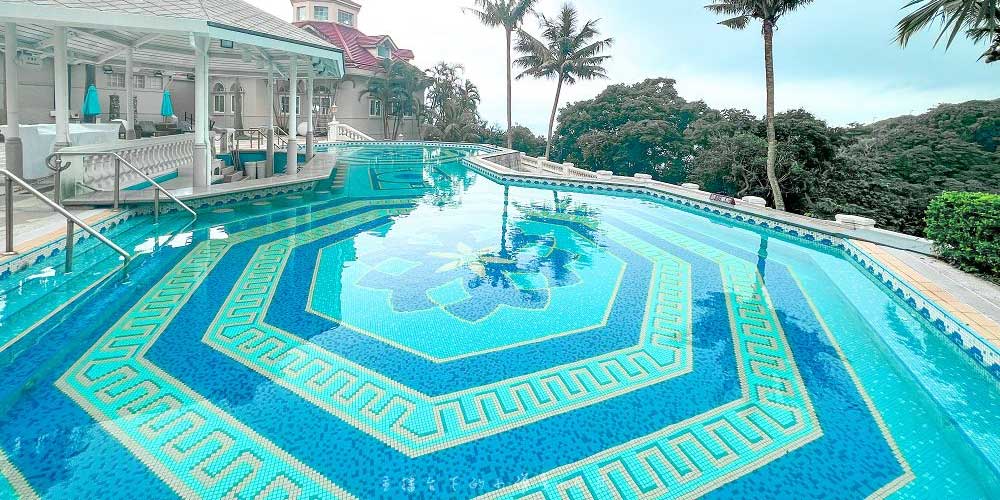Ka dib pH iyo wadarta alkalinity,adkaanta calciumbarkadaada waa arrin kale oo aad muhiim u ah tayada biyaha barkada. Calcium adkeysigu maaha kaliya erey qurux badan oo ay isticmaalaan xirfadlayaasha barkada. Waa arrin aad muhiim u ah in mulkiilaha barkad kastaa uu ka warqabo oo uu si joogto ah ula socdo si looga hortago dhibaatooyinka iman kara. Waa tijaabada aasaasiga ah ee dheelitirka biyaha. Qiimaha ugu yar ee la oggol yahay ee kalsiyumku waa 150 mg/L. Qiyaasta ugu habboon waa 180-250 mg/L ( barkad caag ah) ama 200-275 mg/L ( barkad la taaban karo).
Kaalshiyamku waxa kale oo loo tarjumi karaa "jilicsanaan" ama "engeganaanta" biyaha. Haddii barkaddaadu leedahay adkaanta calcium sare, waxaa loo tixgeliyaa "biyo adag". Dhanka kale, haddii adkaanta kalsiyumku yar tahay, biyaha barkada waxaa loo yaqaan "biyo jilicsan". Waxa ku jira kaalshiyamku waxa ay si isku mid ah muhiim ugu yihiin barkada iyo isbaashaalka,waxana ay siisaa ilaalinta caafimaadka qaab dhismeedka barkada lafteeda.
Ilaha Calcium ee Biyaha Barkadda
Biyaha isha oo aad u jilicsan ama aad u adag ayaa ah qodobka ugu muhiimsan. Haddii jeermis-dilaha barkadaagu yahay kalsiyum hypochlorite, waxay sidoo kale noqon doontaa mid ka mid ah ilaha calcium ee barkadaada. Haddii biyuhu aad u jilicsan yihiin, Kaalshiyamka barkada ku jira waxaa laga heli karaa darbiyada barkada ama barkada hoose ee barkada, waxayna sidoo kale ka iman kartaa biyahaaga ceeriin.
Haddii Calcium-ka Adag ee barkadaagu aanu dheeli tirnayn, waxa laga yaabaa inaad la tacaalayso daxalka gidaarka, biyaha daruuraha leh, iyo dabcan kaydka calcium.
Saamaynta Kala duwanaanshaha Adag-ku-qaadka Calcium ee Barkadaha
Calcium-engegnaanta aad u sarreeya
Marka kalsiyumka ku jira biyaha barkada ay aad u sarreeyaan, biyuhu waxay bilaabi doonaan inay u ekaadaan xoogaa daruuro ah. Tani waa sababta oo ah biyuhu waxay noqdaan kuwo dheregsan, taasoo keenaysa in kalsiyumku uu soo da'o. Waxay keentaa qolof, halkaas oo dhoobada iyo foornada lagu qooyay biyaha ay bilaabi doonaan inay qaataan midab cad oo qallafsan sababtoo ah kaydka calcium. . Habkani waxa uu ku lug leeyahay dahaadhka kaalshiyamka iyo ku dhejinta wax kasta oo la xidhiidha biyaha barkada. Isku-dheellitirashadu waxay sidoo kale si dhab ah u saameyn kartaa waxtarka wareejinta kulaylka ee kuleyliyeyaasha, waxay sababtaa xirmidda tuubooyinka iyo filtarrada. Qiimaha korontada oo kordhay.
Calcium Adaggu Aad U Hooseeyo
Marka waxa ku jira kaalshiyamku yaraadaan, biyuhu waxay noqonayaan kuwo si tartiib tartiib ah u daxalooda. Xaaladdan oo kale, biyuhu way daxaloobayaan marka ay la kulmaan malaasta, shubka ama foornada barkada dhexdeeda, biyaha barkada ayaa si fudud u xumbo. Mustaqbalka fog, tani waxay dhaawici kartaa dhismaha barkada sababtoo ah xoqin, taasoo keenta nabarro iyo nabarro.
Sida loo yareeyo adkaanta Calcium ee barkadaada
Waxaad ku yarayn kartaa adkaanta calcium ee biyaha barkadaada hal ama dhowr hab, oo ay ku jiraan:
1. Biyo nadiif ah: Ka daadi qayb ka mid ah barkadda ka dibna ku buuxi biyo nadiif ah oo leh qallafsanaanta calcium.
2. Ku dar chelators biraha
Sida Loo Kordhiyo Calcium-adkayga Barkadaada
Si loo kordhiyo adkaanta kaalshiyamka biyaha barkadaada, waxaad ku dari kartaa kaalshiyam chloride. Si kastaba ha ahaatee, waa inaad ka taxadartaa markaad ku darayso kaalshiyam chloride. Ku darida chloride calcium oo aad u badan waxay si weyn u kordhin kartaa maadada kaalshiyamka, taas oo ah wax aadan rabin inaad aragto. Markaa raac tilmaamaha hawlgalka alaab-qeybiyaha si aad ugu darto.
Hab kasta oo aad isticmaasho si aad u xalliso dhibaatada engegnaanta calcium, waxaad ugu dambeyntii u baahan doontaa inaad hagaajiso dhammaan tilmaamayaasha ilaa heerka caadiga ah
Dayactirka maalinlaha ah
Tijaabada Joogtada ah: Isticmaal qalabka tijaabada tayada biyaha barkada ama raadso adeega barkada xirfada leh si aad u tijaabiso heerarka adkaanta calcium bishiiba. Tani waxay kaa caawin doontaa inaad la socoto qallafsanaanta kaalshiyamka oo aad sameyso isbeddello lagama maarmaan ah.
Dayactirka Joogtada ah: Nadiifi oo ilaali barkadaada si aad uga hortagto qolofta iyo dhibaatooyinka kale ee la xidhiidha adkaanta calcium sare. Tan waxaa ka mid ah xoqidda darbiyada barkadda, nadiifinta shaandhada, iyo hubinta wareegga habboon.
Isku dheelitirnaanta mid kastatilmaame kiimikaad ee barkadaadawaa muhiim. Wixii su'aalo ah iyo baahiyaha kiimikada, fadlan la xiriir "YUNCANG".
Waqtiga boostada: Agoosto-02-2024


